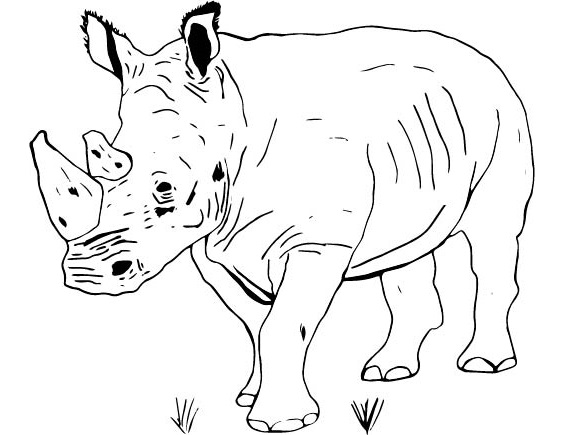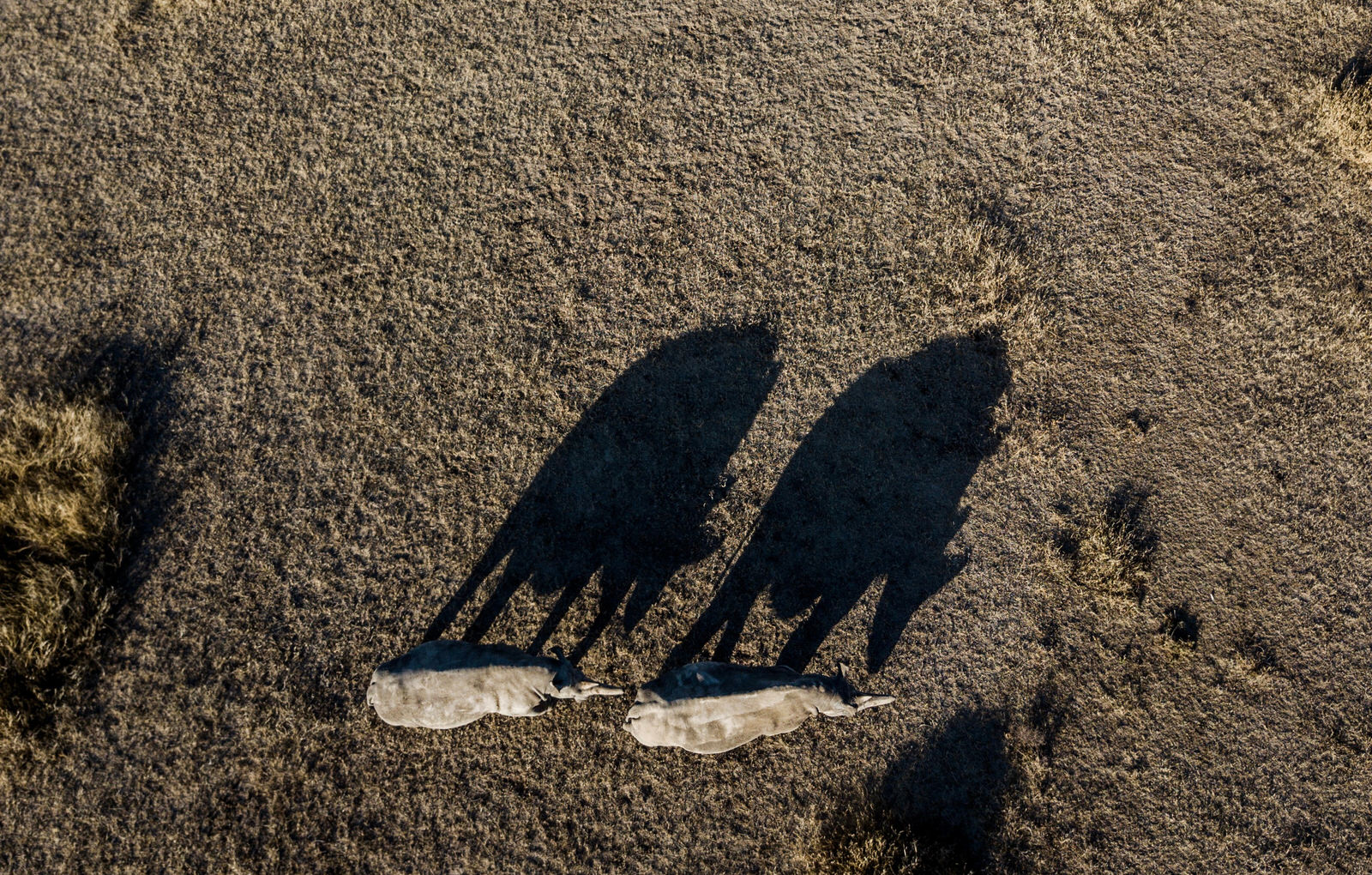Practical information northern white rhino.
- Shape: The northern white rhinos are generally smaller than the southern white rhinos. In both species the female is slightly smaller than the male. There is no quantitative information on the length differences between the southern white rhino and the northern white rhino. The northern white rhino has more hair over its body than the southern white rhino.
- Weight: 1700 – 2400 kg. The female is on average slightly smaller than the male.
- Birth weight: A rhino calf weighs 40 - 60 kg at birth. With calves you only see a small horn emerge 6 weeks before birth. This happens when the black membranes that cover the horn fall off. The rhino calves drink continuously with their mother for up to 6 months, always drinking 2 to 3 minutes. When the calves are 2 months old, they start grazing.
- Hair & skin: The rhino belongs to the group of thick skins. With thick, firm skin, the rhino prevents it from being injured by spiny bushes and branches. The skin color of both the white and black rhino is gray. The appearance of the rhino is formed by the folds in the skin, this gives the rhino the appearance of an armor. The skin of the northern white rhino has more hair than that of the southern white rhino. All types of rhinos have tassels of hair on their eyelids, ears and end of their tails. The rhino's tail is about 80 cm - 100 cm long. The skin behind the ears and in the armpits is soft, while the rest of the rhino feels like an armor. The epidermis of the white rhino is 1 mm thick, the dermis is 18 mm thick, on average. The white rhino has 24 teeth.
- Distinctive features: The northern white rhino has a straighter back than the southern white rhino which has more prominent shoulder blades and a more hollow back. The rib cage is also less prominent in the northern white rhino. The ears and tail of the northern white rhino are hairier than those of the southern. The horns of the southern white rhino have a pointed shape, those of the northern white rhino are more obtuse and often have a somewhat illogical shape, which they can also bend over if they are very long.


